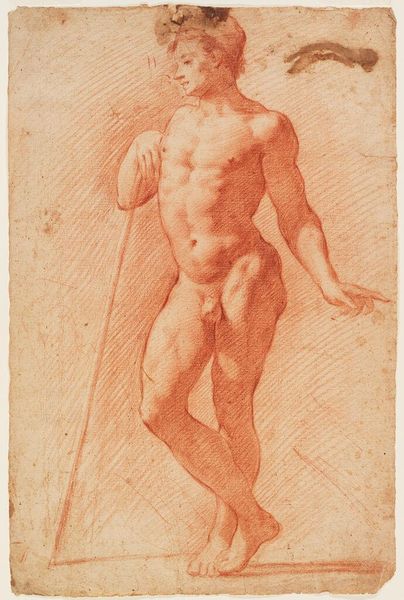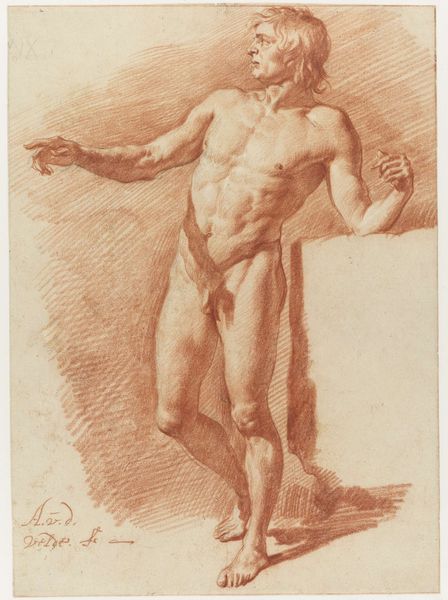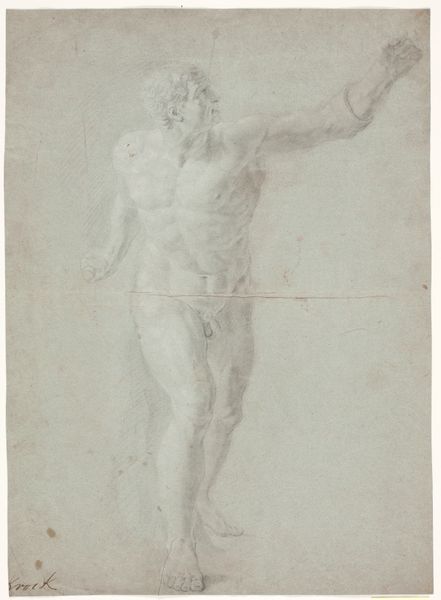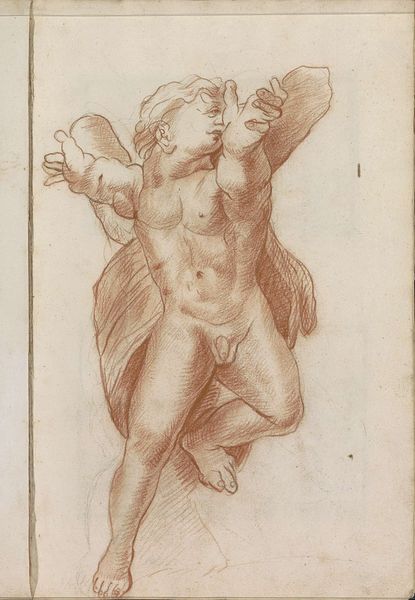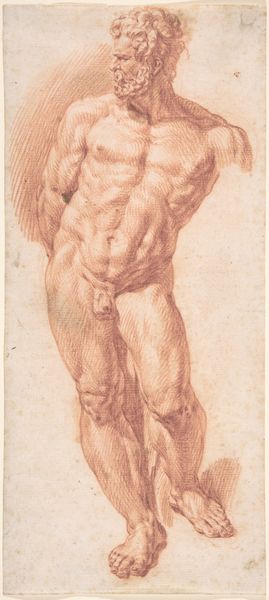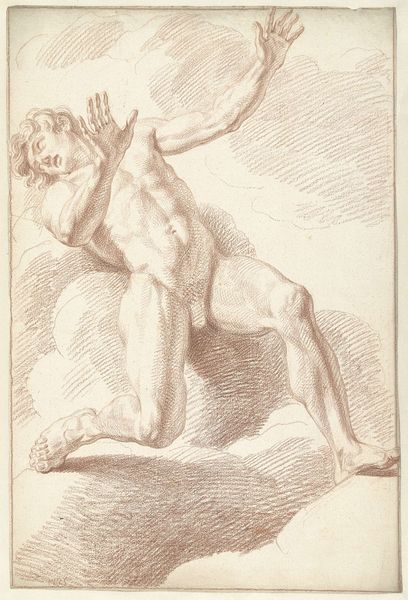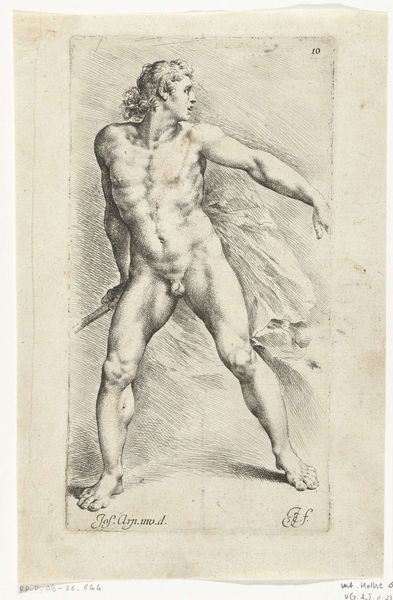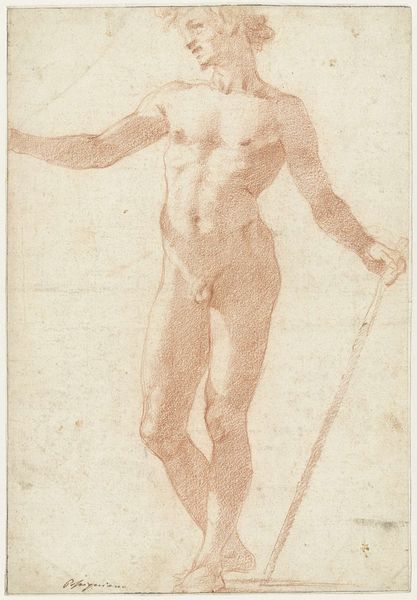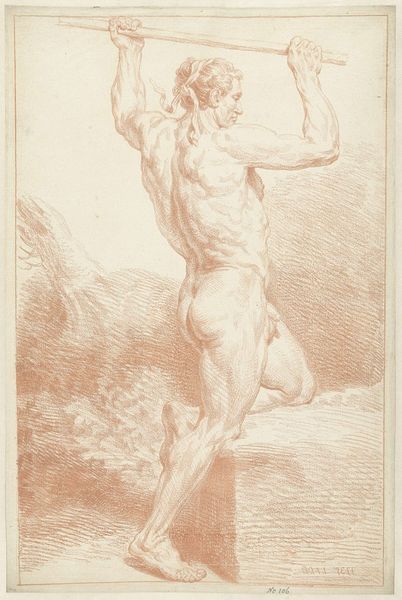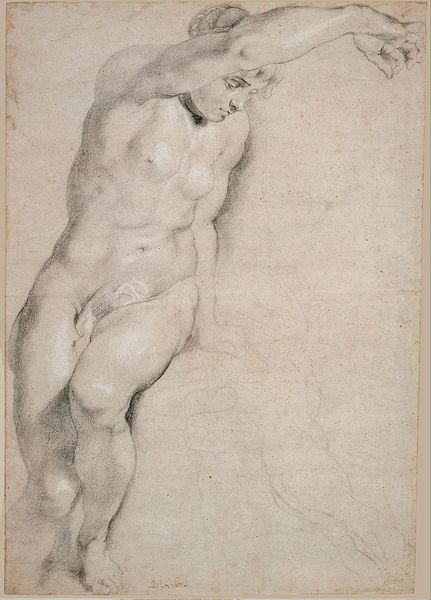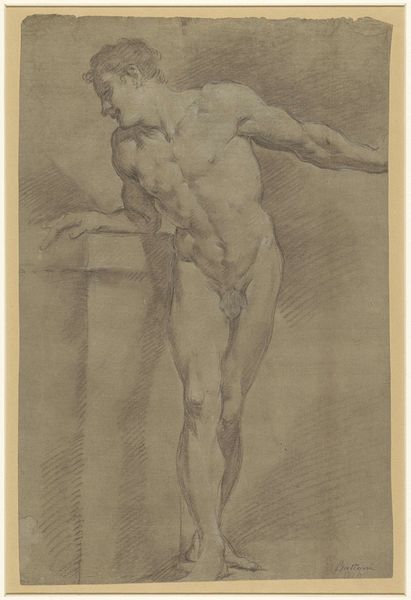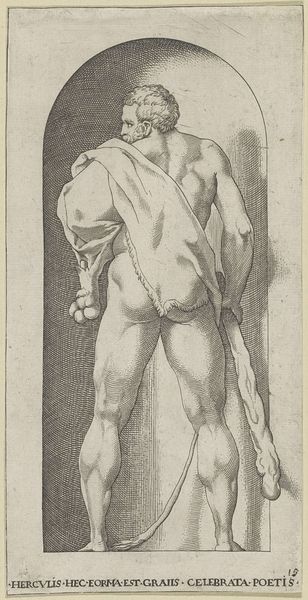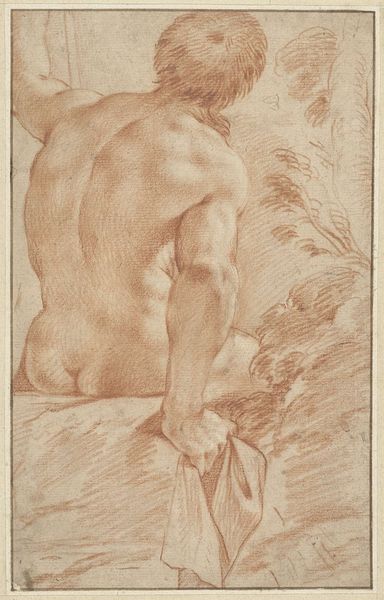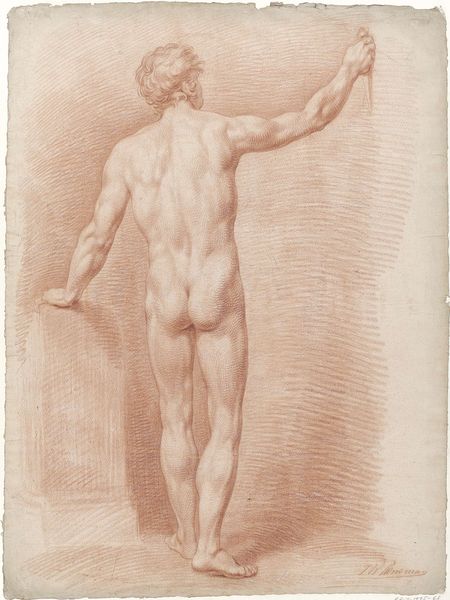
drawing, pencil
#
portrait
#
drawing
#
pencil sketch
#
charcoal drawing
#
figuration
#
pencil drawing
#
pencil
#
portrait drawing
#
academic-art
#
nude
Dimensions: height 470 mm, width 300 mm
Copyright: Rijks Museum: Open Domain
Curator: This drawing, dating from 1703-1775, and held here at the Rijksmuseum, is titled "Mannelijk naakt, staand, op de rug gezien," or "Male Nude, Standing, Seen from the Back," and is attributed to Louis Fabritius Dubourg. It's rendered in pencil. Editor: It strikes me immediately how the red chalk emphasizes the raw physicality, almost like a blueprint for labor. The hatch marks surrounding him amplify the robust three-dimensionality. Curator: Absolutely. You see the clear influence of the academy here, especially in its depiction of idealized male form. It's quite characteristic of the period, meant for the education of artists. These were displayed within studio walls as models. Editor: And what's interesting is that this "educational" process is also embedded in a particular social context, training artists who likely served powerful patrons, creating artworks which were luxury items. Curator: Yes, art patronage shaped so much of artistic production at the time. The demand for academic drawings, the network between students, artists, and their relationship to societal forces contributed to a standardized visual culture that trickled down from elite to popular imagery. Editor: The texture of the paper, the pressure applied to the pencil—these all point to a craftsman dedicating labor to constructing an ideal form. The choice of such intense chalk isn't just aesthetic either; I wonder how the availability of this reddish pigment played into popularizing drawings of its kind. Curator: A wonderful point! I hadn't considered that specific element of availability shaping aesthetic trends. This does broaden the narrative we assign to the piece. Thank you! Editor: Likewise! I now consider the work as something much more than simple craftwork; instead I view it as something produced and propelled by specific socio-historical structures. Curator: Agreed. It allows a richer and fuller appreciation of how art functions and affects the development of public tastes during its period and today.
Comments
No comments
Be the first to comment and join the conversation on the ultimate creative platform.
